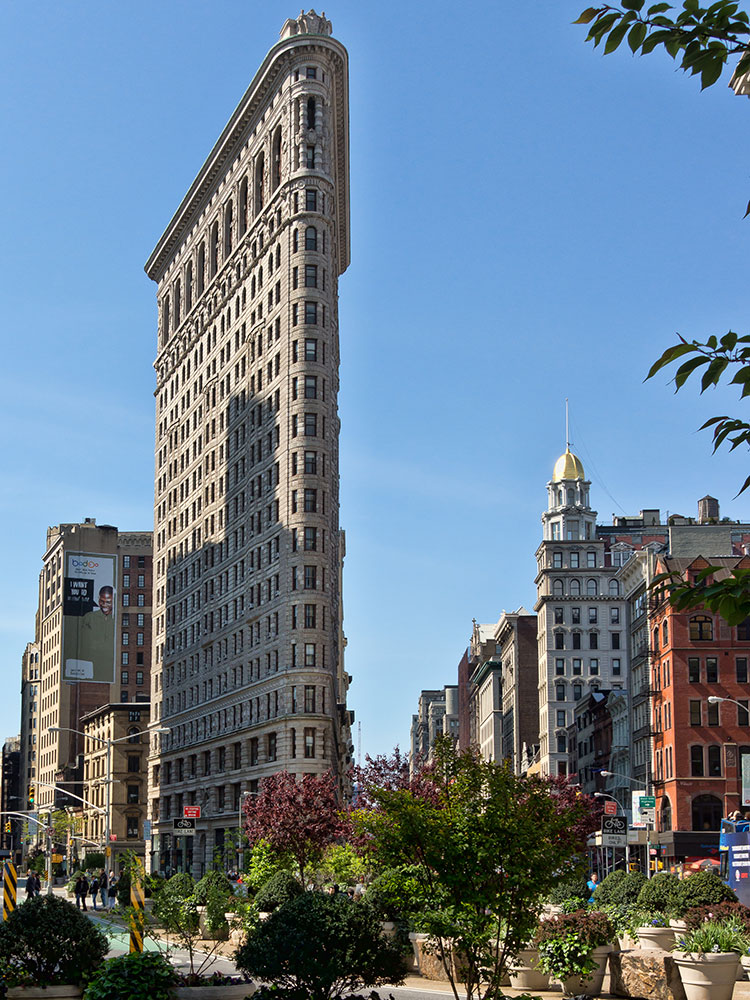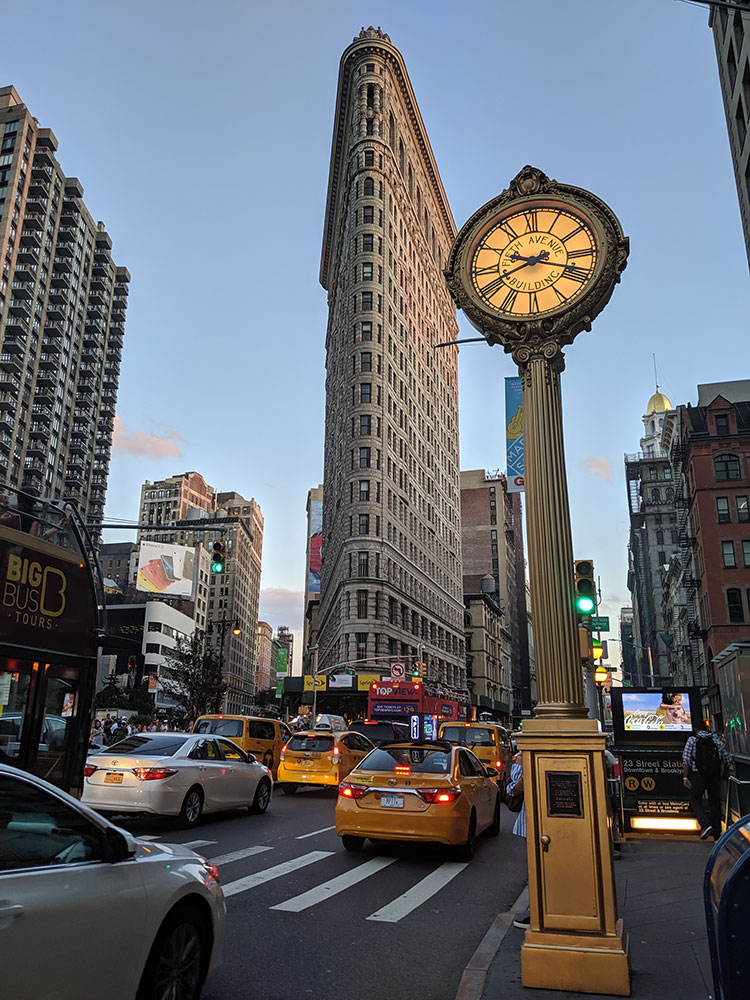Triangular 22-story, 285-foot-tall (86.9 m) steel-framed landmarked building located in the eponymous Flatiron District neighborhood of Manhattan
General Information
The Flatiron Building, originally the Fuller Building, is a triangular 22-story, 285-foot-tall (86.9 m) steel-framed landmarked building located at 175 Fifth Avenue in the eponymous Flatiron District neighborhood of Manhattan. Designed by Daniel Burnham and Frederick Dinkelberg, it was one of the tallest buildings in the city upon its 1902 completion, at 20 floors high, and one of only two "skyscrapers" north of 14th Street - the other being the Metropolitan Life Insurance Company Tower, one block east. The building sits on a triangular block formed by Fifth Avenue, Broadway, and East 22nd Street - where the building's 87-foot (27 m) back end is located - with East 23rd Street grazing the triangle's northern (uptown) peak. As with numerous other wedge-shaped buildings, the name "Flatiron" derives from its resemblance to a cast-iron clothes iron.
The building, which has been called "one of the world's most iconic skyscrapers and a quintessential symbol of New York City", anchors the south (downtown) end of Madison Square and the north (uptown) end of the Ladies' Mile Historic District. The neighborhood around it is called the Flatiron District after its signature building, which has become an icon of New York City. The Flatiron Building was designated a New York City landmark in 1966, was added to the National Register of Historic Places in 1979, and was designated a National Historic Landmark in 1989.
 Jean-Christophe BENOIST, CC BY 3.0, via Wikimedia Commons; Image Size Adjusted
Jean-Christophe BENOIST, CC BY 3.0, via Wikimedia Commons; Image Size AdjustedThe Flatiron was to attract the attention of numerous artists. It was the subject of one of Edward Steichen's atmospheric photographs, taken on a wet wintry late afternoon in 1904, as well as a memorable image by Alfred Stieglitz taken the year before, to which Steichen was paying homage. Stieglitz reflected on the dynamic symbolism of the building, noting upon seeing it one day during a snowstorm that "... it appeared to be moving toward me like the bow of a monster ocean steamer - a picture of a new America still in the making," and remarked that what the Parthenon was to Athens, the Flatiron was to New York. When Stieglitz's photograph was published in Camera Work, his friend Sadakichi Hartmann, a writer, painter and photographer, accompanied it with an essay on the building: "A curious creation, no doubt, but can it be called beautiful? Beauty is a very abstract idea ... Why should the time not arrive when the majority without hesitation will pronounce the 'Flat-iron' a thing of beauty?"
The Flatiron's interior is known for having its strangely-shaped offices with walls that cut through at an angle on their way to the skyscraper's famous point. These "point" offices are the most coveted and feature amazing northern views that look directly upon another famous Manhattan landmark, the Empire State Building.
 PortableNYCTours, CC BY-SA 4.0, via Wikimedia Commons; Image Size Adjusted
PortableNYCTours, CC BY-SA 4.0, via Wikimedia Commons; Image Size AdjustedThe Flatiron Building was designed by Chicago's Daniel Burnham as a vertical Renaissance palazzo with Beaux-Arts styling. Unlike New York's early skyscrapers, which took the form of towers arising from a lower, blockier mass, such as the contemporary Singer Building (built 1902-08), the Flatiron Building epitomizes the Chicago school conception. Like a classical Greek column, its facade - limestone at the bottom changing to glazed terra-cotta from the Atlantic Terra Cotta Company in Tottenville, Staten Island, as the floors rise - is divided into a base, shaft, and capital.
This article uses material from the Wikipedia article "Flatiron Building", which is released under the Creative Commons Attribution-Share-Alike License 3.0